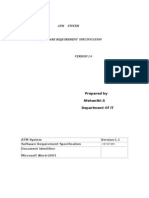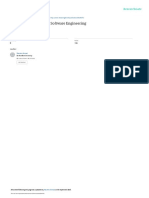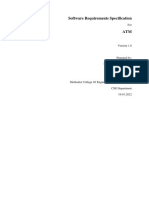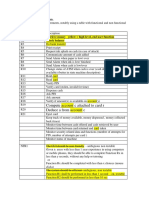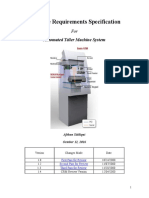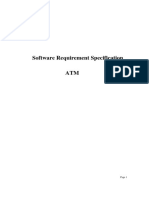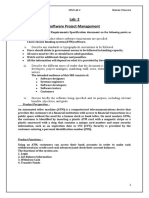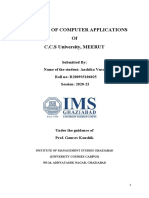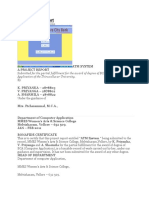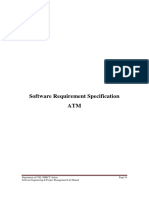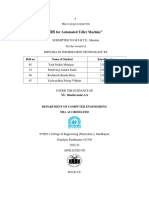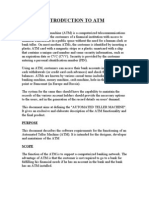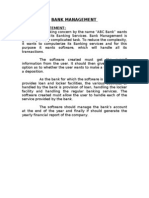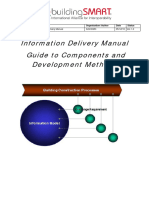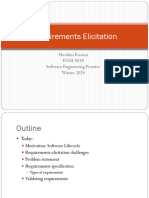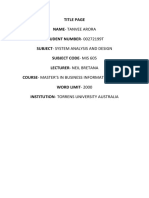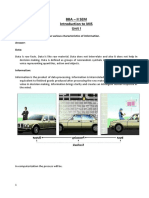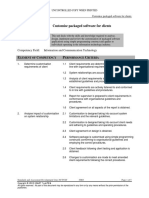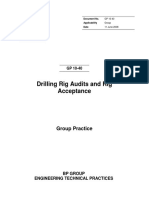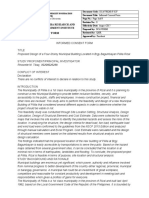0% found this document useful (0 votes)
10 views10 pagesSoftware Engineering PDF
The document outlines the development of an ATM system project, detailing the problem statement, process model, application requirements, software requirements specification (SRS), and use-case diagram. It emphasizes the transition from traditional banking methods to a more user-friendly ATM interface, highlighting functional and non-functional requirements. The Waterfall model is chosen for project management, and the SRS defines the system's features, constraints, and user interactions.
Uploaded by
senpaifr1107Copyright
© © All Rights Reserved
We take content rights seriously. If you suspect this is your content, claim it here.
Available Formats
Download as PDF, TXT or read online on Scribd
0% found this document useful (0 votes)
10 views10 pagesSoftware Engineering PDF
The document outlines the development of an ATM system project, detailing the problem statement, process model, application requirements, software requirements specification (SRS), and use-case diagram. It emphasizes the transition from traditional banking methods to a more user-friendly ATM interface, highlighting functional and non-functional requirements. The Waterfall model is chosen for project management, and the SRS defines the system's features, constraints, and user interactions.
Uploaded by
senpaifr1107Copyright
© © All Rights Reserved
We take content rights seriously. If you suspect this is your content, claim it here.
Available Formats
Download as PDF, TXT or read online on Scribd
/ 10
